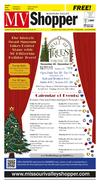14.pdf





Shop online at www.missourivalleyshopper.com
March 12, 2013 • Page 14
Gardening tips
for beginners
Gardening is a rewarding hobby that many
enthusiasts credit with
helping them to peacefully
escape from the hustle and
bustle of everyday life.
Though gardening can
be both relaxing and
rewarding, it's not as easy
as it may seem, and the
more time and effort a
person devotes to his or
her garden the more likely
it is to be successful.
Gardening can be a little
daunting for beginners
who have little or no experience planting flowers or
vegetables. But gardening
need not be so intimidating, especially for those
beginners who adhere to
the following tips aimed at
helping novice gardeners
start their gardens off on
the right foot.
*Determine what you
should plant. Where you
live will go a long way
toward determining what
you should plant. While
you can plant anything
you can get your hands on,
the
United
States
Department
of
Agriculture as well as
Agriculture and Agri-Food
Canada have determined
specific plant hardiness
zones that indicate which
plants are most likely to
thrive in given locations.
Maps of these zones can be
found at www.usda.gov
and www.agr.gc.ca. By
adhering to the maps, gardeners can significantly
increase their chances of
growing successful gardens. When in doubt
about what to plant, consult a local gardening center or seek advice from a
professional landscaper.
*Think location when
beginning your garden.
Beginners with large yards
have the luxury of choosing the right location on
their properties to start
planting. When choosing a
spot, consider how much
sunlight a location gets on
a daily basis and the spot's
proximity to a water supply. If planting flowers, try
to avoid planting in areas
with heavy foot traffic so
the flowers are less likely
to be stomped. If you're
planting flowers to accent
walkways, then consider
erecting a barrier around
the flower bed to safeguard the flowers from
foot traffic.
*Get started before you
plant. Preparing the soil a
few weeks before you start
planting can help the
plants thrive down the
road. Add some organic
material, such as compost
or fertilizer, to the soil
roughly three weeks before
planting. This helps the
soil retain water and nutrients, which will help your
garden thrive.
Have you seen this pest?
Japanese Beetles in Field Crops
Japanese beetle adult. Beetles are large, between 1/3 and
1/2 inch long.
Photo by: Daren Mueller, Iowa State University for Bugwood.org.
The Japanese beetle
(Popillia japonica) is
becoming an increasingly prevalent pest in the
North Central region,
and it can occasionally
be an economic problem
in soybeans or corn. The
Japanese beetle should
not be confused with the
Asian lady beetle (which
is often called a Japanese
beetle by mistake). Asian
lady beetles are familiar
to many as the yellow or
orange lady beetles that
come into houses in the
fall, and they are beneficial predators of crop
pests. Japanese beetles
are large (up to 1/2 inch
long) and metallic green
and copper colored.
Adults feed on the leaves
and flowers of over 300
plant species. They are
an introduced pest first
found in the U.S. in 1916
in New Jersey. Only in
recent years have they
become common in the
Midwest.
The South Dakota
Department
of
Agriculture monitors for
this pest with traps, and
it has been detected in
several counties, particularly
in
the
Southeastern part of the
state.
Japanese beetle immatures are soil-dwelling,
white grubs that feed on
roots and organic material, and they are often
pests of turfgrass.
The adults typically
feed between the veins
of leaves causing a characteristic lacy or “skeletonized” damage. They
COMPLETE TRUCK REPAIR
Spring Tuneup $49 95
• FARM TRUCKS - ALL SIZES
Oil Change • Filter
Sharpen Blade
Spark Plug
Yankton Home &
Garden Repair
All Makes & Models!
3302 West 8th St. Offering
605-665-2521
Cell: 661-4954 Dixon • Echo
Dolmar
• SEMI TRUCKS & TRAILERS
Friendly, Honest Repair
TOP QUALITY SERVICE
Over 35 Years
Experience
VARILEK TRUCK REPAIR, INC.
3507 East Hwy. 50, Yankton, SD
1-605-665-1447 or Toll Free: 1-888-665-1447
feed on a wide range of
plants including various
ornamentals, fruits, and
vegetables.
Though they are more
common in horticultural
settings, they will also
feed in field crops,
including corn and soybeans. In soybeans they
cause defoliation of
leaves, which reduces
photosynthesis, and in
corn they feed on silks,
reducing kernel set.
Though still a minor field
crop pest, Japanese beetle outbreaks are becoming more common in
Illinois and Iowa soybeans and corn. So far in
South Dakota most
reported problems with
Japanese beetles have
been in gardens near
urban centers, but as it
becomes more common
in South Dakota, producers should also be on the
lookout for this insect in
crops.
Japanese beetles have
one generation per year
and overwinter as grubs
in the soil. Adults emerge
from the soil in late May
or early June and can be
found through early
September. Feeding damage is most noticeable in
July
and
August.
Japanese beetle feeding
damage in soybean may
be confused with bean
leaf
beetle
feeding
because both make
holes in the leaves, but
bean leaf beetle feeding
produces more smoothedged “shot-holes” in the
leaves,
whereas
Japanese beetles create
a lacy patchwork of
holes between the veins.
Also, unlike bean leaf
beetles, Japanese beetles are not shy or skittish and are usually
found easily at the scene
of their crimes. Damage
often appears first at
field edges.
Soybeans can bear a
fair amount of defoliation before yield is lost,
so modest numbers of
Japanese beetles and
other defoliators can be
tolerated. Consider management when total defoliation from all leaf-feeding pests reaches 40% in
pre-bloom, 20% during
bloom and pod-fill and
35% from pod-fill to harvest.
Consider the whole
plant when making this
decision, not just upper
leaves. If beetles are
aggregated in border
rows, consider an edge
treatment first. A number of pesticides are
labeled for Japanese beetle control in soybean.
We Have a Full Line of
Filters, Belts
& Hydraulic Hoses
for all Your Farming Needs
AUTO PARTS
1509 E. Hwy. 50
Yankton, SD
605-665-3693
Serving
the area for
over
80 years!
sturdevants.com
Valley Ag Supply is your locally owned, National
Forage Testing certified hay testing lab.
Hay tests are done on site and results can be e-mailed,
faxed or mailed the same day!
2013
The 4500 Series features:
We’re rolling out our 4500 Series electric roll tarp!
Check out its powerful new motor with all-metal casing and incredibly reliable magnetic brake. Call today!
509 Washington Street (that’s Main Street)
Gayville, SD • 267-3100
Count on us for SALES - INSTALLATIONS - REPLACEMENT PARTS
Shur-Co® Outlet Store
2309 Shur-Lok St.
605.665.6000
shurco.com
As always, we have the equipment and trained,
knowledgeable people to get the job done right this spring!







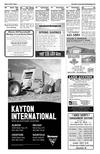

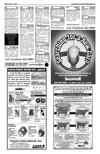

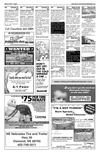

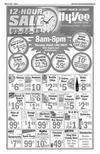
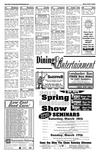
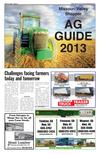




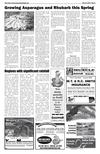
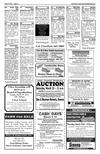
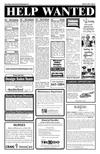



 Previous Page
Previous Page




